Navigation
Install the app
How to install the app on iOS
Follow along with the video below to see how to install our site as a web app on your home screen.

Note: This feature currently requires accessing the site using the built-in Safari browser.
More options
You are using an out of date browser. It may not display this or other websites correctly.
You should upgrade or use an alternative browser.
You should upgrade or use an alternative browser.
Canon fullframe dslr
- Thread starter fusooy
- Start date
- Joined
- May 1, 2008
- Messages
- 25,422
- Reaction score
- 5,003
- Location
- UK - England
- Website
- www.deviantart.com
- Can others edit my Photos
- Photos OK to edit
The core operation of a DSLR of any level is identical - aperture, shutter speed and ISO are your variables that control exposure and that never changes. So you can certainly start at any level you want, the only real limit there is your budget and how much you can afford to invest - many start off at the earlier stages because they simply can't afford or justify going higher.
The only things you'll miss are maybe 5 or so auto modes like macro, landscape, action, portrait, no flash - otherwise the modes will be the same. Further if you're a keen photographer you'd fast never use those few auto modes anyway.
The higher level cameras will have more additional bells and whistles attached to them and cameras like the 5DMIII will have more customisable options. That said you don't have to jump in the deep end and learn them all to get good results.
That said what is your overall budget and what are you hoping to shoot with your camera? The 5DMIII is in all ways superior to the 6D - however sometimes you might find that investing the price difference into lenses and/or lighting gear might well give you far more gain than a higher end camera body. Some idea of your intent really helps for giving advice on how to approach things.
The only things you'll miss are maybe 5 or so auto modes like macro, landscape, action, portrait, no flash - otherwise the modes will be the same. Further if you're a keen photographer you'd fast never use those few auto modes anyway.
The higher level cameras will have more additional bells and whistles attached to them and cameras like the 5DMIII will have more customisable options. That said you don't have to jump in the deep end and learn them all to get good results.
That said what is your overall budget and what are you hoping to shoot with your camera? The 5DMIII is in all ways superior to the 6D - however sometimes you might find that investing the price difference into lenses and/or lighting gear might well give you far more gain than a higher end camera body. Some idea of your intent really helps for giving advice on how to approach things.
Overread said:The core operation of a DSLR of any level is identical - aperture, shutter speed and ISO are your variables that control exposure and that never changes. So you can certainly start at any level you want, the only real limit there is your budget and how much you can afford to invest - many start off at the earlier stages because they simply can't afford or justify going higher.
The only things you'll miss are maybe 5 or so auto modes like macro, landscape, action, portrait, no flash - otherwise the modes will be the same. Further if you're a keen photographer you'd fast never use those few auto modes anyway.
The higher level cameras will have more additional bells and whistles attached to them and cameras like the 5DMIII will have more customisable options. That said you don't have to jump in the deep end and learn them all to get good results.
That said what is your overall budget and what are you hoping to shoot with your camera? The 5DMIII is in all ways superior to the 6D - however sometimes you might find that investing the price difference into lenses and/or lighting gear might well give you far more gain than a higher end camera body. Some idea of your intent really helps for giving advice on how to approach things.
Thanks a lot for ur valuable input. My budget could cover upto the 5DMIII plus kit lens so no problems with that. I wanna take photos of my kids, travel photos, some event photos like parties, weddings and maybe some landscape photos. Am not going into wildlife, sports photos as yet. I am also concerned abt the AF system of 6D compared to 5dmIII. Will that make a big difference in image output? I will be acquiring the following EF lenses 135mm f2, 35mm f1.4 and 50mm f1.4 too. Now wuld either of the cameras make any difference to these lenses. Sorry if i am being a pest with little knowledge! Greatly appreciate any help.
ronlane
What's next?
- Joined
- Aug 3, 2012
- Messages
- 10,224
- Reaction score
- 4,961
- Location
- Mustang Oklahoma
- Website
- www.lane-images.com
- Can others edit my Photos
- Photos OK to edit
OP, all of the lenses that you list will work on both the 5D and 6D. That's a good list of lenses as well.
- Joined
- May 1, 2008
- Messages
- 25,422
- Reaction score
- 5,003
- Location
- UK - England
- Website
- www.deviantart.com
- Can others edit my Photos
- Photos OK to edit
Honestly the 6D is very new and I've not heard too much about it.
For what you say are your intentions I would expect that the auto-focus in the 6D should be more than sufficient in most situations and that it would indeed be a fantastic starting camera to go for. The big bonus of the 5DMIII that I'm aware of at present is that it has a much more powerful AF system. Now you might not be doing sports or wildlife, but doing indoor low light shooting you might find that the improved AF system helps.
It's a hard call to make as I don't know how "behind" the 6D is in features - also your intentions are mostly at a level where honestly any DSLR can perform well. In the end I think that its really going to come down to a choice you'll have to make for yourself as to if the 6D is enough or if you really want to go for the 5DMIII. You've already done some research into lenses it seems and those are great choices which would work well on either body. Furthermore lenses advance much more slowly so they will last easily for decades of good use.
I would read some more reviews of the 6D and compare the features and then see if there is a local shop you can buy them from- a chance to feel both in your hand might show that one is more suitable than the other as the 6D is a bit smaller than the 5DMIII
For what you say are your intentions I would expect that the auto-focus in the 6D should be more than sufficient in most situations and that it would indeed be a fantastic starting camera to go for. The big bonus of the 5DMIII that I'm aware of at present is that it has a much more powerful AF system. Now you might not be doing sports or wildlife, but doing indoor low light shooting you might find that the improved AF system helps.
It's a hard call to make as I don't know how "behind" the 6D is in features - also your intentions are mostly at a level where honestly any DSLR can perform well. In the end I think that its really going to come down to a choice you'll have to make for yourself as to if the 6D is enough or if you really want to go for the 5DMIII. You've already done some research into lenses it seems and those are great choices which would work well on either body. Furthermore lenses advance much more slowly so they will last easily for decades of good use.
I would read some more reviews of the 6D and compare the features and then see if there is a local shop you can buy them from- a chance to feel both in your hand might show that one is more suitable than the other as the 6D is a bit smaller than the 5DMIII
bratkinson
No longer a newbie, moving up!
- Joined
- Dec 4, 2011
- Messages
- 1,643
- Reaction score
- 318
- Location
- Western MA
- Can others edit my Photos
- Photos OK to edit
Having moved from a Canon G5 to a 30D to a 60D to a 5D3 in 2 years, I can tell you first hand the level of options "grows" dramatically at each of the steps. To wit: the 60D user manual (English) is 324 pages (PDF from Canon), whereas the 5D3 is 404 pages (Canon PDF)! I -still- haven't figured out/found the need for perhaps 25% of the features on the 60D. I'm sure the 5D3 will be my last camera. Hopefully, I'll fully understand and be able to utilize it to its fullest before someone inherits it.
As a former mainframe computer consultant with more than 50 years of taking pictures behind me, it is mind-boggling all the options available on a 5D3 compared to a simple point and shoot....or 35mm. Back in the film days, there wasn't much more to deal with than focus, shutter speed, aperture (f-stop), film type and speed (WB & ISO, today), and flash or no flash. Oh yea...optional motor drive on some cameras. The 5D3 has perhaps 25 screens of 5-6 options each, many with 5-6 options under that, a myriad of AF modes, focus point selections, customizable shooting modes, and much more. Going from zero to a 5D3 would be impossible for this old guy. I'd be stuck in the "Scene Intelligent Auto" for life if I started there!
Bottom line...I'd start simple. Start with a good entry level camera like a Rebel T3i (great price at B&H right now B&H Shopping Cart | B&H Photo Video ) and learn the basics first. The key is to outgrow the capabilities of the camera...not buy everything in sight and get overwhelmed trying to use it.
One more thought..."full frame" is overrated in my book. There's nothing that says full frame cameras take better pictures than crop bodies. It's all about the photographer, not the box with glass on the front.
As a former mainframe computer consultant with more than 50 years of taking pictures behind me, it is mind-boggling all the options available on a 5D3 compared to a simple point and shoot....or 35mm. Back in the film days, there wasn't much more to deal with than focus, shutter speed, aperture (f-stop), film type and speed (WB & ISO, today), and flash or no flash. Oh yea...optional motor drive on some cameras. The 5D3 has perhaps 25 screens of 5-6 options each, many with 5-6 options under that, a myriad of AF modes, focus point selections, customizable shooting modes, and much more. Going from zero to a 5D3 would be impossible for this old guy. I'd be stuck in the "Scene Intelligent Auto" for life if I started there!
Bottom line...I'd start simple. Start with a good entry level camera like a Rebel T3i (great price at B&H right now B&H Shopping Cart | B&H Photo Video ) and learn the basics first. The key is to outgrow the capabilities of the camera...not buy everything in sight and get overwhelmed trying to use it.
One more thought..."full frame" is overrated in my book. There's nothing that says full frame cameras take better pictures than crop bodies. It's all about the photographer, not the box with glass on the front.
ronlane
What's next?
- Joined
- Aug 3, 2012
- Messages
- 10,224
- Reaction score
- 4,961
- Location
- Mustang Oklahoma
- Website
- www.lane-images.com
- Can others edit my Photos
- Photos OK to edit
Bottom line...I'd start simple. Start with a good entry level camera like a Rebel T3i (great price at B&H right now B&H Shopping Cart | B&H Photo Video ) and learn the basics first. The key is to outgrow the capabilities of the camera...not buy everything in sight and get overwhelmed trying to use it.
One more thought..."full frame" is overrated in my book. There's nothing that says full frame cameras take better pictures than crop bodies. It's all about the photographer, not the box with glass on the front.
I can see your point about starting simple but I think that depends. I would have to advise someone to get as much camera as they can the first time to avoid having to upgrade as often. I started simple with the T3i in April and am now at a point where I wished I would have gotten the 60D or 7D at that time. (I am wanting to upgrade to the 7D now).
Dao said:If you are not going after the on-camera flash, auto modes that available only in the lower end cameras and most important cost is not a factor, I will say go with 5DIII.
Talking abt built in flash, can one get by, using a dslr without built-in or external flash? Or is it a must for an external flash?
- Joined
- May 1, 2008
- Messages
- 25,422
- Reaction score
- 5,003
- Location
- UK - England
- Website
- www.deviantart.com
- Can others edit my Photos
- Photos OK to edit
With the insanely high ISO capabilities (esp if you go fo the 5DMIII) then - yes you can mostly get away without a flash for most family shoots. That said high ISO introduces noise into the shot and saps the overall quality and can also require time in editing (not much but you will have to spend some time learning about noise removal methods). A single flash can be a major addition and make things a lot easier in many situations.
A simple Speedlite flash works very well - whilst Canon even make a small flash (controlled via the cameras menus instead of on controls on the flash itself) in their 270EX series - ideal if you want something that replaces teh popup if you don't have one in the camera (Although also subject to many limitations also present with popup flashes - although the 270EX flashes can aim upwards for some diffusion in indoor areas).
You can get by without one, but you'll find that having one adds a lot to what you can do.
A simple Speedlite flash works very well - whilst Canon even make a small flash (controlled via the cameras menus instead of on controls on the flash itself) in their 270EX series - ideal if you want something that replaces teh popup if you don't have one in the camera (Although also subject to many limitations also present with popup flashes - although the 270EX flashes can aim upwards for some diffusion in indoor areas).
You can get by without one, but you'll find that having one adds a lot to what you can do.
Dao
No longer a newbie, moving up!
Actually, 5DIII or entry level DSLR, I will get a external flash. It is nice to have a on-camera flash. It comes in handy sometimes (i.e. use it as fill under harsh sun light). But a external flash is better option anyway whether it is a TTL or non TTL.
paigew
Been spending a lot of time on here!
- Joined
- Nov 15, 2011
- Messages
- 3,881
- Reaction score
- 1,831
- Location
- Texas (Hill Country)
- Website
- www.paigewilks.com
- Can others edit my Photos
- Photos NOT OK to edit
If you can afford it go all the way!! I wish I would have gone with ff rather than a crop because it has only been 1 year and I already want to upgrade.
jaomul
Been spending a lot of time on here!
- Joined
- Feb 4, 2011
- Messages
- 5,715
- Reaction score
- 1,554
- Location
- Cork Ireland
- Can others edit my Photos
- Photos OK to edit
Ff and crop cameras work exactly the same as said. Both differ in the field of view they capture so lenses of similar focal lengths on one may not be suitable for the same photo situation on the other. Don't be put off by the Ff difficulty. It doesn't exist
TCampbell
Been spending a lot of time on here!
- Joined
- Mar 31, 2012
- Messages
- 3,614
- Reaction score
- 1,556
- Location
- Dearborn, MI
- Can others edit my Photos
- Photos OK to edit
Most people _want_ a full frame camera, but given that the price tag of even an "inexpensive" FF camera is still higher than an "expensive" crop-frame camera, the crop-frame bodies are far more popular. Full-frame is what people tend to want... eventually.
If you can afford a full-frame body now, then by all means, go for it.
Full frame isn't any more or less complicated than using a nice crop-frame camera. There will always be differences from body to body, but the major difference really is that the larger sensor size provides a larger field of view through the lens. As a side-effect of having a larger sensor, the reflex mirror also needs to be larger, which means the pentaprism has to be larger, which means the viewfinder offers a larger and brighter view as well -- they're a joy to use.
Overread mentioned the auto "scene" based modes go away. That's because "scene" based automatic shooting modes really just bias the camera's exposure settings. For any given shot, there are probably MANY different combinations of shutter speed, aperture, and ISO which all technically collect the same balance of light to create a proper exposure. But while you might want a narrow aperture and longer shutter speed for a landscape photo, you would probably want a fast shutter speed and a wide aperture for a sports photo. The "scene" based modes simply tell the camera "I'm taking a landscape photo" or "I'm taking an action/sports photo" so that it will bias the exposure toward the settings which are more optimal for the type of shooting you plan to do. Since full-frame cameras tend to be owned by people who have been shooting a while, and those same experienced photographers know how to bias the exposure settings, the "scene" based auto modes are unnecessary on high-end pro bodies (it's considered a feature that probably only beginners would want.)
Crop-frame bodies are somewhat more forgiving in the optical quality of lens glass as compared to full-frame. That's because the central axis of a lens tends to be it's "sweet spot" -- it can deliver the sharpest part of an image in the center. As you increase the distance from the center, the image quality degrades. A full-frame camera has a significantly larger sensor size... which means it's corners are farther away from the center. THAT means you want lenses where the resolving power doesn't degrade much and those lenses tend to be more expensive. So... if you're buying a full-frame camera, don't get stingy on what you're willing to spend on the lenses.
If you can afford a full-frame body now, then by all means, go for it.
Full frame isn't any more or less complicated than using a nice crop-frame camera. There will always be differences from body to body, but the major difference really is that the larger sensor size provides a larger field of view through the lens. As a side-effect of having a larger sensor, the reflex mirror also needs to be larger, which means the pentaprism has to be larger, which means the viewfinder offers a larger and brighter view as well -- they're a joy to use.
Overread mentioned the auto "scene" based modes go away. That's because "scene" based automatic shooting modes really just bias the camera's exposure settings. For any given shot, there are probably MANY different combinations of shutter speed, aperture, and ISO which all technically collect the same balance of light to create a proper exposure. But while you might want a narrow aperture and longer shutter speed for a landscape photo, you would probably want a fast shutter speed and a wide aperture for a sports photo. The "scene" based modes simply tell the camera "I'm taking a landscape photo" or "I'm taking an action/sports photo" so that it will bias the exposure toward the settings which are more optimal for the type of shooting you plan to do. Since full-frame cameras tend to be owned by people who have been shooting a while, and those same experienced photographers know how to bias the exposure settings, the "scene" based auto modes are unnecessary on high-end pro bodies (it's considered a feature that probably only beginners would want.)
Crop-frame bodies are somewhat more forgiving in the optical quality of lens glass as compared to full-frame. That's because the central axis of a lens tends to be it's "sweet spot" -- it can deliver the sharpest part of an image in the center. As you increase the distance from the center, the image quality degrades. A full-frame camera has a significantly larger sensor size... which means it's corners are farther away from the center. THAT means you want lenses where the resolving power doesn't degrade much and those lenses tend to be more expensive. So... if you're buying a full-frame camera, don't get stingy on what you're willing to spend on the lenses.
Similar threads
- Replies
- 9
- Views
- 356
- Replies
- 9
- Views
- 680
- Replies
- 6
- Views
- 2K

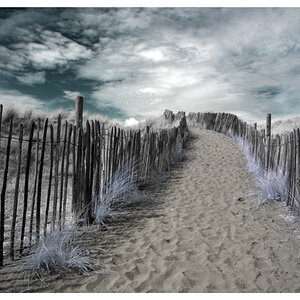
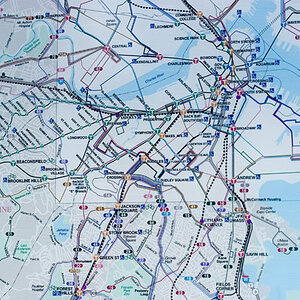
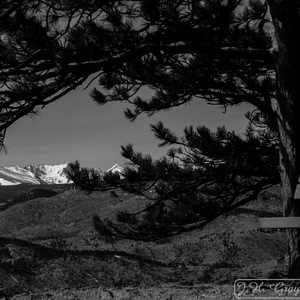
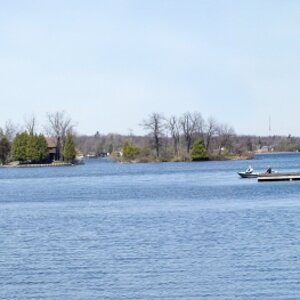
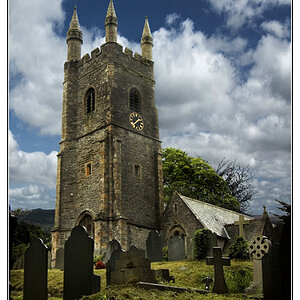
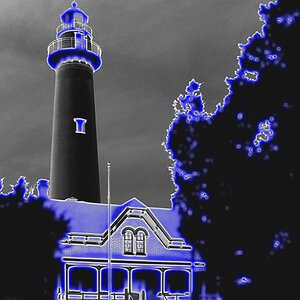
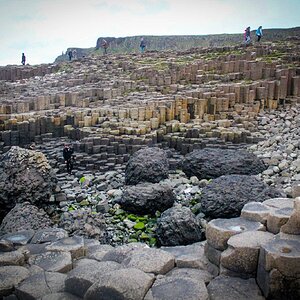
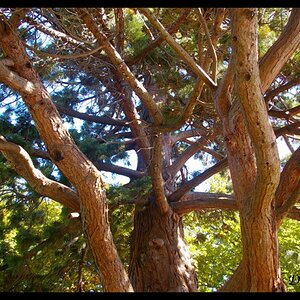
![[No title]](/data/xfmg/thumbnail/37/37634-504722605a418b398f3cd1dbabf936e5.jpg?1619738156)